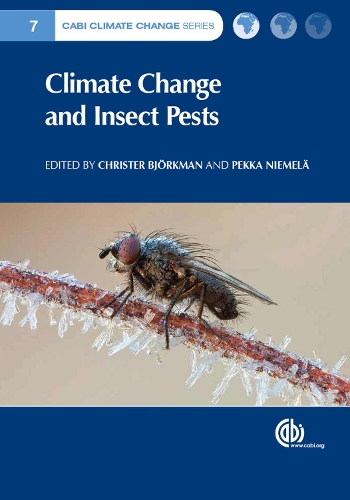
Climate Change and Insect Pests
Series: Cabi Climate Change
Insects, being poikilothermic, are among the organisms that are most likely to respond to changes in climate, particularly increased temperatures. Range expansions into new areas, further north and to higher elevations, are already well documented, as are physiological and phenological responses. It is anticipated that the damage to crops and forests by insects will increase as a consequence of cl
NaN
VOLUME
English
Paperback

Insects, being poikilothermic, are among the organisms that are most likely to respond to changes in climate, particularly increased temperatures. Range expansions into new areas, further north and to higher elevations, are already well documented, as are physiological and phenological responses. It is anticipated that the damage to crops and forests by insects will increase as a consequence of climate change, i.e. increasing temperatures primarily. However, the evidence in support of this common "belief" is sparse. Climate Change and Insect Pests sums up present knowledge regarding both agricultural and forest insect pests and climate change in order to identify future research directions.Table of Contents: Part I: General Issues and Patterns 1: Climate Change and Insect Pest Distribution Range 2: Species Distribution Modelling in Predicting Response to Climate Change 3: Adaptive Responses of Plants to Insect Herbivores under Climate Change 4: Boreal Woody Species Resistance Affected by Climate Change 5: Effects of Climate Change on the Interactions Between Insect Pests and Their Natural Enemies Part II: Agricultural Pests 6: Physiological Variation of Insects in Agricultural Landscapes: Potential Impacts of Climate Change 7: Climate Change and Biological Control in Agricultural Systems: Principles and Examples from North America 8: Climate Change Effects on Agricultural Insect Pests in Europe Part III: Forest Pests 9: Abiotic Factors, Climatic Variability and Forest Insect Pests 10: Responses of Tree-killing Bark Beetles to a Changing Climate 11: The Eurasian Spruce Bark Beetle: The Role of Climate 12: Pine Wood Nematode, Pine Wilt Disease, Vector Beetle and Pine Tree: How a Multiplayer System Could Reply to Climate Change 13: Northern Geometrids and Climate Change: From Abiotic Factors to Trophic Interactions 14: Effects of New Forest Management on Insect Damage Risk in a Changing Climate
Price Comparison [India]
In This Series
Bestseller Manga
Trending NEWS




















